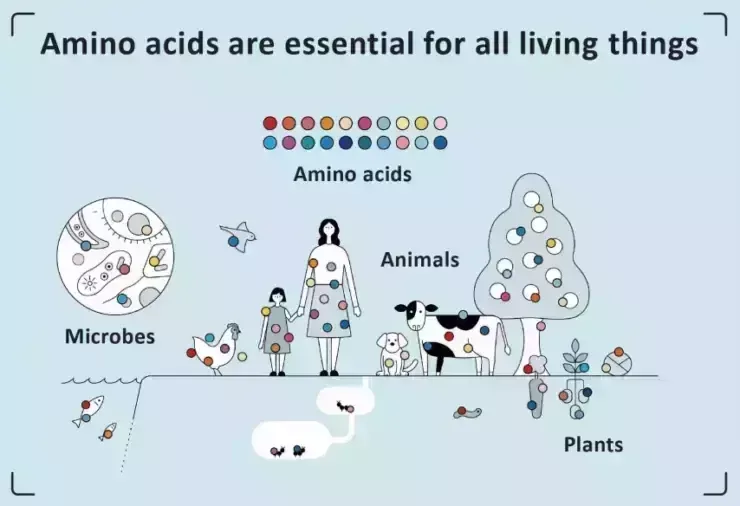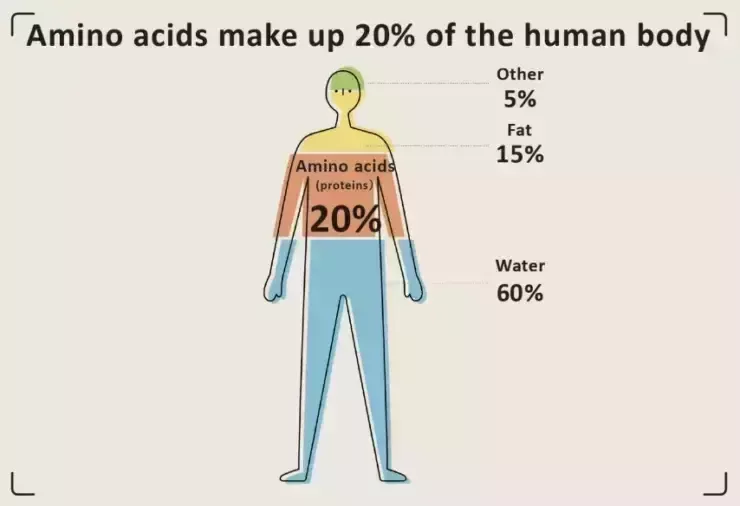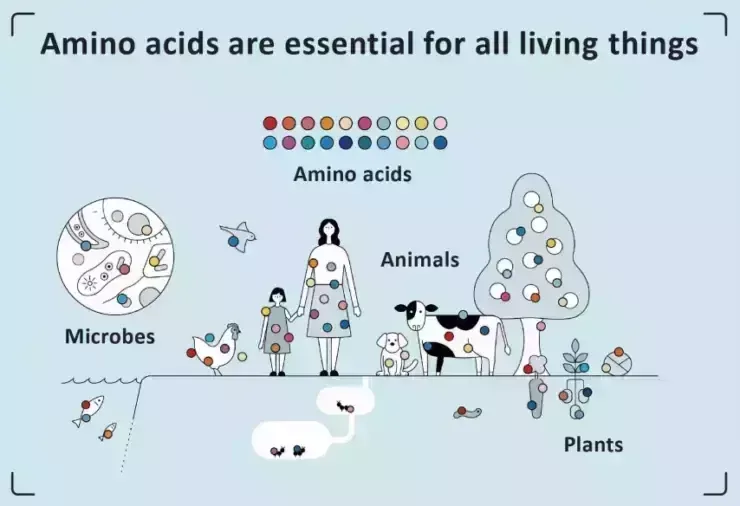Amino acids: are made up of chemical molecules that have been joined together to form a compound called a protein. Amino acids are made up of three groups: an amino group, a carboxyl group, and a side group that is unique to each amino acid.
Carbon, hydrogen, oxygen, and nitrogen are among the elements found in amino acids.

What is amino acids
amino acids (LATs) is enzymes that perform critical roles in human physiology and are implicated in a number of human diseases. It is believed that LATs are asymmetric amino acid exchangers, in which the interchange of substrates with high apparent affinity on the extracellular side is controlled by the exchange of substrates with low apparent affinity on the cytoplasmic side.

Types of amino acids
Amino acids are divided into 3 basic types:
Essential amino acids
There are nine essential amino acids (in English: Essential Amino Acids), which are distinguished by the fact that they cannot be manufactured in sufficient quantities in the human body and must be obtained from food. Food sources include eggs, meat, poultry, milk, fish, and plant foods such as soybeans, beans, nuts, and grains.
When the body doesn’t obtain enough of any of the essential amino acids, it breaks down muscle proteins to get them. This is because, unlike fats and carbs, the body cannot retain excess amounts of it for later use.
The most important roles of essential amino acids are as follows:
Lysine
The amino acid lysine is essential for:
- Muscle development.
- Keep your bones in good shape.
- Assisting in the recovery of an injury or illness.
- Hormones, antibodies, and enzymes are all regulated.
Histidine
Histidine is an amino acid that has the following effects:
- Hemoglobin includes 8.5 percent histidine, which aids in the formation of blood cells.
- Tissue regeneration.
- Cognitive function and memory development
- By stimulating the stomach to create digestive juices, the digestion process is improved.
- The myelin sheath, a particular protective layer that covers nerve cells, is preserved.
- Increasing the efficacy of cancer-treatment medications.
- It’s worth noting that histidine is converted in the body to histamine, a protein that aids in the maintenance of the body’s immunity and aids in the development of blood vessels, which enhances blood flow.
Threonine
Threonine is an amino acid that is required for oral health. The amino acid threonine is required for the formation of tooth enamel. It is also vital for maintaining healthy skin because it is required for the manufacture of collagen and elastin, both of which are important components of the skin. and connective tissues.
Methionine
Methionine is essential for the health and flexibility of the skin and hair, as well as the maintenance of strong nails. It also aids in the absorption of selenium and zinc, both of which are essential for the body’s health.
Methionine can be converted to cysteine, an amino acid that aids in the removal of heavy metals like lead and mercury from the body.
Valine
Valine is an amino acid that helps people focus and maintain mental activity while also helping to restore bodily tissues. It’s worth noting that a shortage of valine can lead to insomnia and poor mental performance.
Lsoleucine
Isoleucine is an amino acid that helps the body perform a variety of tasks, including:
- Aiding in the healing of wounds.
- Controlling blood sugar levels.
- Hormone production is regulated.
- Hemoglobin’s chemical make-up.
- leucine
Leucine is beneficial because it:
- Keeping blood sugar levels in check.
- Growth and healing of muscles and bones.
- Healing of wounds
- Production of Human Growth Hormone ( Hgh ).
- It’s important to note that a shortage of leucine might cause skin rashes, hair loss, and weariness.
Read also: What is hgh
Amino Acids and Hgh
Human growth hormone (hGH) is a hormone that is essential for growth and development. It is produced by somatotropic cells in the anterior pituitary gland, which are seen in the majority of people. The hormone is synthesized from a precursor protein with 217 amino acids. The 26 amino acids at the N-terminus correspond to a signal peptide, which is required for hormone secretion to take place.
Specific amino acids, such as arginine, lysine, and ornithine, have been shown to promote the release of growth hormone (GH) when injected intravenously or supplied orally in humans.
Phenylalanine
Phenylalanine aids the body’s ability to:
Other amino acids, proteins, and enzymes are used.
Because phenylalanine is commonly present in the artificial sweetener aspartame, it is used in the production of diet soft drinks.
Because patients with phenylketonuria, a rare genetic condition, are unable to metabolize phenylalanine, it is recommended that they avoid foods that contain high levels of this amino acid, such as milk, eggs, and meat.
Tryptophan
Because the amino acid tryptophan is thought to be a relaxing nerve, consuming tryptophan supplements can help you focus and relax.
Pellagra is a disorder caused by a lack of tryptophan, which can induce dementia, skin rashes, and stomach issues.
:
